The best French floatplane ?
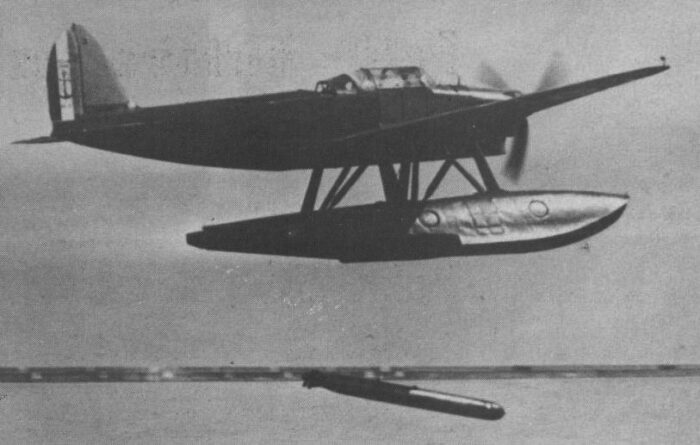
A Laté 298 dropping its payload during exercises
A navy specification was issued in 1933 to replace the Latécoère 290 torpedo seaplane in service from 1934 in the French naval aviation (“Aéronavale”). This request concerned a new torpedo bomber and Latécoère proposed a derivative of its former model, as the model 298, improving incrementally over its predecessor in power and performances. The Latécoère 298.01 made its first flight in May 1936 with pilot Jean Gonord.
About Latécoère
Latécoère is one of the main French manufacturer specialized in floatplanes and flying boats, if not the most famous specialist. Still in the business today the company was founded by Georges Charles Pierre Latécoère (born 1883). After his father deceased, he retook the company and from woodcutting had now manufactured rolling stock for the Bigorre tramways, and the southern railway company with stocks for Eastern Europe and the colonies. During the First World War, he volunteers as an artilleryman for four months, but was returned to civilian life due to his poor eyesight and as a business manager strategic for the country’s transportation. He then invested his company and took part in the war effort and invested in two factories in Toulouse, one to manufacture shells, the other aircraft cells, from 1916. This was the first in Toulouse by the way. In 1918 he had delivered about 800 complete aircraft to the French army at a rate of six aircraft per day from May.
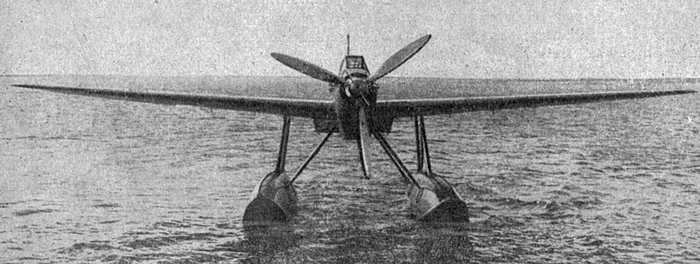
Photo from L’Aerophile review, August 1938
Capitalizing on this experience, he decided to maintain his activity in peacetime, notably to keep most of his facilities, tooling, engineers and skilled workers. In 1918, he imagined an air freight and mail line linking France to Senegal via Spain and Morocco and started working on a plane to fill these needs. On December 25, 1918 however her used as a prototype an existing Salmson 2A2, piloted by René Cornemont. In 1919, he founded Lignes Aériennes Latécoère exploited under the name Compagnie générale d’entreprises aéronautiques (1921-1927), a transatlantic air line dedicated to postal service also appeared in the 1920s. Later this became the Compagnie générale aéropostale, and in 1927 it its glory days, with flights over the Andes mountain range in 1928 related by Saint-Exupéry in his novel “Vol de nuit” and first commercial transatlantic crossings from Dakar to Natal by Jean Mermoz. After 1929 however situation degraded her he was in bankrucy by 1931.Its assets were taken over by the French State in 1933 in what became Air France.
A major industrialist, Latécoère once had a 26,000 m2 factory to supply the Aéropostale and very quickly, her became passionate about building seaplanes for the postal line. His company forged ahead with its own design office and many models soon were launched, the Laté (shortened form for Latécoère) 32, Laté 300 and 301, Laté 500, before the appearance of the large tonnage seaplanes Laté 521 and 522 hexaengine. The, last mos famous of all was the Latécoère 631 “Sky Paquebot” made at Biscarrosse, SW France. from July 4, 1947 to August 1, 1948, carrying 2,000 passengers with two rotations per month. His service ended in 1948, with the competition of better aicraft and jets.
Precedessor: The Latécoère 290
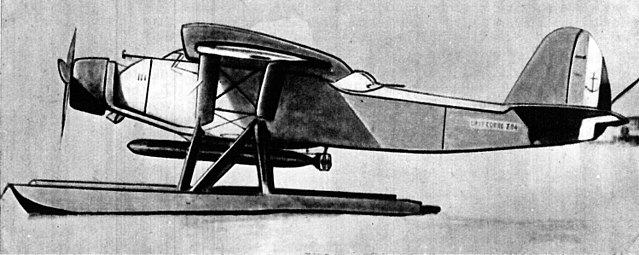
The Latécoère 290 was the previous naval aviation torpedo seaplane, a single engine monoplane featuring a high wing and capable to release its torpedo at a maximum speed of 200 km/h. It could be also equipped with a landing gear. It first flew in 1931, was introduced in 1933 and equipped coastal torpedo airborne units. 35 were built: 2 initial prototypes, 30 serial models and three improved prototypes, Laté 293, 94 and 96. They were deployed in three squadrons, two based in Cherbourg and one on the Berre lake, for the Mediterranean fleet.
The serial version had an inline Hispano-Suiza 12 Nbr rated for 650 hp. It had a wingspan of 19.25 m, length of 14.05 m, height of 6.08 m and a wing surface of 58.40 m2. It was 2,871 kg empty and 4,649 kg fully loaded, max. for 220 km/h, 4,000 m ceiling. These were lackluster performnces, with a wing loading of 79.6 kg/m2 and a weight/power ratio 7.1 kg/hp.
Alternatively to its torpedo, the Laté 290 could carry two bombs abd was defended by a rear-mounted (dorsal turret) Darne 7.7 mm machine gun. The Navy wanted its replacement as soon as possible, as it was a heavy prey for fighters, between its slow speed and low ceiling. It was scheduled to replace it in 1937 already but it started in 1939, and only partially realized by May 1940. The Laté 290 was still around in WW2, albeit most were sent to North Africa or Indochina by that stage.
Design
Design Genesis
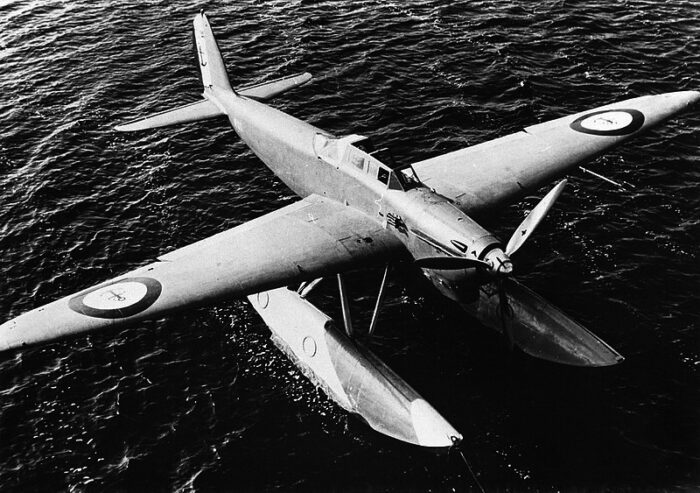
On May 12, 1931, the circular 96 EMG/1 made official the letter T for torpedoing, as applied to naval aviation. Two test units were created, the T10 and T402 created in 1924 but they were reassigned to bombing in 1925), howver units organization changed in 1938, with two squadrons named T1 and T2 joined in 1939 by the newly formed T3 and T4. Before that in 1930, SIDAL, the Latécoère branch specialized in postal planes, developed a three-seater torpedo plane based on the Laté 28.3 which won the South Atlantic. It was developed as the Latécoère 29, qute close in design to its civilian predecessor, and powered by a 650 hp Hispano-Suiza 12Nbr. The floats were manufactured at Saint Laurent de la Salanque and it was tested at Saint Raphaël base. Intially 30 aircraft were ordered, the first sent to 4T1 in Berre by June 1933.
However ths model proved problematic, slow, underpowered and prone to a fairly high number of accidents during its early years of service. t spurred the Navy to press for a successor which became the the Latécoère 298. First study started in 1934, and the prototype had now a more modern configuration with low mounted wings, still monoplane. The Laté 298 prototype took off for the first time on May 8, 1936 at Saint Laurent de la Salanque, Mediterranean and had its official tests at Saint Raphaël in font of the Naval staff soon after.
These trials were successful and led to a first order for 36 aircraft, with more of improved versions later. However in all, onlt 129 units were built between 1938 and 1942.
General layout

3 views, rendition by Vincent Bourguignon, wardrawings.be
The Latécoère 298 started as a mid-wing cantilever monoplane of metal construction with the exception of its canvas-covered wooden tailplanes, and powered by variable-pitch propeller and lower surface flaps. It was a three-seater float plane with tapered wings. It could carry a torpedo or 50 and 100 kg bombs in a hold under the fuselage. The prototype proved successful and an order for 127 production copies was placed by the French authorities. The Laté 298A, 298B and 298D entered service until the armistice of June 1940 and filled active squadrons.
In addition to a more rugged and modern structure, it was powered by a Hispano-Suiza 12 Ycrs twelve-cylinder liquid-cooled engine rated for 880 hp. To better take advantage of it, the Laté 298 had a variable-pitch propeller and intrados flaps. It had two exceptionally large floats attached to the fuselage by struts, each one containing a fuel tank. It also had a ventral crutch to accommodate different payloads depending on the mission.
Its armament was the same 400 mm torpedo as the prvious Laté 290, or two 150 kg bombs strapped in the same in ventral hold, which better blanded with the fuselage for superior performances, instead of a hanging down torpedo. The defens armament comprised two 2 Darne 7.5 mm machine guns in the wings and another, plus another in the rear cockpit, placed on a flexible mount, served by the 3rd member of the crew. The second was seated in the middle of the cockpit and tasked of radio communication, reporting and navigation.
However its reception was mixed. Today it is considered probably the best French seaplane, but pilots criticized its overall design. It had the same engine as contemporary single-engine French fighters with an Hispano-Suiza 12Y also powering the MS.406, but the model was alsmot twice as large and heavy, designed as a three-seater, with the added drag caused by two large floats, and loaded with a heavy torpedo.

Understandably, performance were not stellar, and even with an increase of 90 kph over the Laté 290, it was basically a sitting duck for preying fighters, twice as fast. In operations it never acted as intended. And its perhaps fortunate as torpedoing was probably the single most dangerous specialty in naval aviation, approaching the objective at low speed on a steady course and drop the torpedo very close to the intended target given the performances of these. It was important to not damage the torpedo when released, braving AA. The Laté 298 never carried such mission in combat ever but had at leat a redeeming quality, it was recoignised as rugged and dependable. The way it was used doomed it however in combat.
Note: The main Type 1926 DA torpedo entered Service c1928 as a single-stage turbine engined torpedo which was designed to be “universal”, usable by destroyers, submarines and aircraft, and thus, mass produced until May 1940. It had one of the best turbine systems developed in the interwar, and the airborne version had shroud ring, being dropped from 260 feet (80 m).
Weight was1,486 lbs (674 kg) for 16 ft. 10.5 in. (5.140 m) in lenght, with a 317 lbs. (144 kg) TNT warhead. It had two speed settings, 2,200 yards (2,000 m) at 44 knots and 3,300 yards (3,000 m) at 35 knots, powered by a turbine fed by Alcohol Wet-heater.
Variants

Latécoère 298A
The Latécoère 298A was delivered from October 1938 as the initial production version.
Latécoère 298B
The Laté 298B had dual controls and folding wings to be operated from Cdt Teste, and an observation post added for a crew of four.
Latécoère 298D
The Laté 298D featured dual controls and fixed wings but similar to the B version.
Latécoère 298E
Modified Laté 298D fitted with a ventral observation gondola replacing the underbelly weapons racks. It was a fully glassed forward section for a laying observer. The view was shomewhat obstructed however by the two floats. This prototype was not followed by any production.
Latécoère 299A


A much improved variant which first flew on 7 July 1939. Only 2 built, powered by a 920 hp Hispano-Suiza 12Y-43, never operational.

⚙ Laté 298 specifications |
|
| Empty Weight | 2,671 kg |
| Gross Weight | 4,517 to 4,800 kg max |
| Lenght | 12,56 m |
| Wingspan | 15,50 m |
| Height | 5,236 m |
| Wing Area | 31,6 m2 |
| Engine | Hispano-Suiza 12Ycrs liquid-cooled V-12 880 hp |
| Top Speed | 290 km/h |
| Range | 1 500 km |
| Ceiling | 5 100 m |
| Armament | 400/450 mm DAI/DA torpedoes, 3x Darne 7,5 mm LMGs |
| Crew | 3: Pilot, observer/radio, MG gunner |
Operational History

The first Laté 298s entered service in October 1938 with the Aéronautique Navale in naval bases and later on a seaplane tender, four squadrons in September 1939 and six by May 1940, 81 aircraft between them, but until June 1940, two more were created, so during the French campaign, eight operational squadrons served, more than the three fielding the Laté 290. And that included the two on board the seaplane transport Commandant Teste. The operated at first as intended, used at first for maritime patrol and anti-submarine duties.

But like most aeronavale models they were engaged like other naval aircraft, in desperation, in the land combat of May-June 1940, harassing German motorized units between Boulogne and the Somme. This was not their intended mission and they were rather diappointing due to the drag cause by their floats. Losses were heavy.
After the armistice, six squadrons had been maintained and remained in service with authorization from the German and Italian commissions. On the other hand, only one managed to flee to Britain in May 1940 to constitute the start of a small squadron of the Free French, even incorporated into the British Coastal Command and trained, equipped and used for anti-submarine warfare. Two were used by personnel of the FFL initially. The one that fled (against orders) towards England, the other one from Dakar, intercepted by the authorities of the Vichy government and its crew imprisoned. After Operation Torch, French units in Africa which fielded the Laté 298 joined the Coastal Command in North Africa, in cooperation with Royal Air Force Wellingtons.
Their final combat missions arrived in 1944, during the liberation of France, used to attack German shipping from from the last strongholds on the Atlantic coast until they fell in 1945. The last were retired in 1946 but ligered as trainers until 1950. The few which survived the war were used for training until late 1951 but none preserved.

As tested by the Germans.
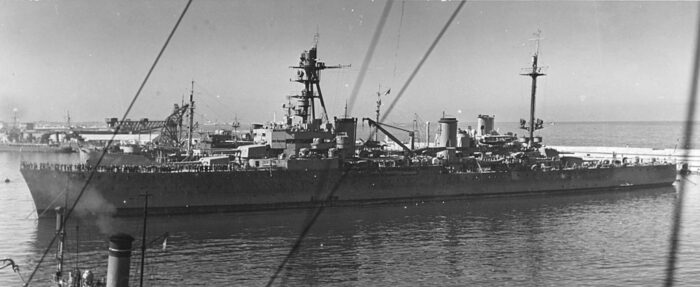
The cruiser Tourville at Casablanca in late 1943 with one Laté 298 and two Loire 130M on board.
Gallery
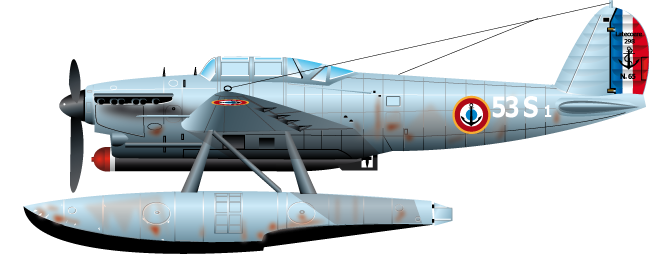
Old vectorial illustration by the author

TI.2 squadron, 1939

Flotille TF7, 1939

HB1 escadrille, Karouba, Tunisia March 1940

Vichy Frence Flotille 6F, Berre lake, 1942








Laté 299A fighter prototyoe with a 990 hp engine and contrarotating propellers. It was tested by the Luftwaffe.
Note: All photos are from Pinterest.
Read More
Gérard Bousquet, Latécoère 290 & 298, French Wings 1, Mushroom
Robert Gruss, Les Flottes de Combat 1938.
Les Ailes Françaises, l’Encyclopédie des avions de la Seconde Guerre Mondiale (3).
Aviafrance. Latécoère 290, 1931, Hydravion de torpillage. Bruno Parmentier
Aviastar.org. Latecoere 290, 1931
Postedeschoufs. Les escadrilles de torpillage
Links
jnpassieux.fr
aviationsmilitaires.net
greec.free.fr
greec.free.fr
passionair1940.fr
avionslegendaires.net
navweaps.com/
alchetron.com
fr.wikipedia.org
Model Kits
Video

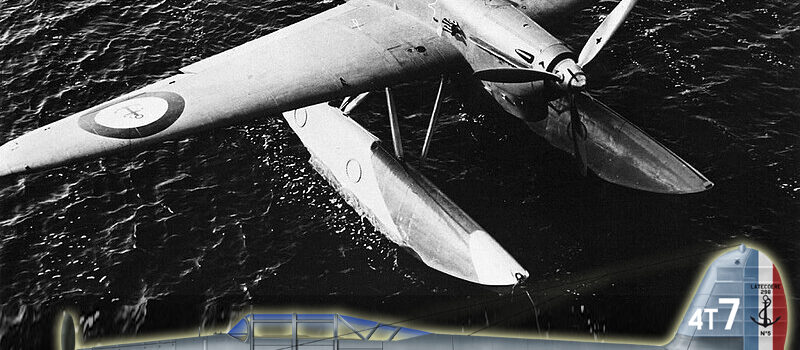
 Latest Facebook Entry -
Latest Facebook Entry -  X(Tweeter) Naval Encyclopedia's deck archive
X(Tweeter) Naval Encyclopedia's deck archive Instagram (@navalencyc)
Instagram (@navalencyc)





 French Navy
French Navy Royal Navy
Royal Navy Russian Navy
Russian Navy Armada Espanola
Armada Espanola Austrian Navy
Austrian Navy K.u.K. Kriegsmarine
K.u.K. Kriegsmarine Dansk Marine
Dansk Marine Nautiko Hellenon
Nautiko Hellenon Koninklije Marine 1870
Koninklije Marine 1870 Marinha do Brasil
Marinha do Brasil Osmanlı Donanması
Osmanlı Donanması Marina Do Peru
Marina Do Peru Marinha do Portugal
Marinha do Portugal Regia Marina 1870
Regia Marina 1870 Nihhon Kaigun 1870
Nihhon Kaigun 1870 Preußische Marine 1870
Preußische Marine 1870 Russkiy Flot 1870
Russkiy Flot 1870 Svenska marinen
Svenska marinen Søværnet
Søværnet Union Navy
Union Navy Confederate Navy
Confederate Navy Armada de Argentina
Armada de Argentina Imperial Chinese Navy
Imperial Chinese Navy Marinha do Portugal
Marinha do Portugal Mexico
Mexico Kaiserliche Marine
Kaiserliche Marine 1898 US Navy
1898 US Navy Sovietskiy Flot
Sovietskiy Flot Royal Canadian Navy
Royal Canadian Navy Royal Australian Navy
Royal Australian Navy RNZN Fleet
RNZN Fleet Chinese Navy 1937
Chinese Navy 1937 Kriegsmarine
Kriegsmarine Chilean Navy
Chilean Navy Danish Navy
Danish Navy Finnish Navy
Finnish Navy Hellenic Navy
Hellenic Navy Polish Navy
Polish Navy Romanian Navy
Romanian Navy Turkish Navy
Turkish Navy Royal Yugoslav Navy
Royal Yugoslav Navy Royal Thai Navy
Royal Thai Navy Minor Navies
Minor Navies Albania
Albania Austria
Austria Belgium
Belgium Columbia
Columbia Costa Rica
Costa Rica Cuba
Cuba Czechoslovakia
Czechoslovakia Dominican Republic
Dominican Republic Haiti
Haiti Hungary
Hungary Honduras
Honduras Estonia
Estonia Iceland
Iceland Eire
Eire Equador
Equador Iran
Iran Iraq
Iraq Latvia
Latvia Liberia
Liberia Lithuania
Lithuania Mandchukuo
Mandchukuo Morocco
Morocco Nicaragua
Nicaragua Persia
Persia San Salvador
San Salvador Sarawak
Sarawak Uruguay
Uruguay Venezuela
Venezuela Zanzibar
Zanzibar Warsaw Pact Navies
Warsaw Pact Navies Bulgaria
Bulgaria Hungary
Hungary

 Bundesmarine
Bundesmarine Dutch Navy
Dutch Navy Hellenic Navy
Hellenic Navy Marina Militare
Marina Militare Yugoslav Navy
Yugoslav Navy Chinese Navy
Chinese Navy Indian Navy
Indian Navy Indonesian Navy
Indonesian Navy JMSDF
JMSDF North Korean Navy
North Korean Navy Pakistani Navy
Pakistani Navy Philippines Navy
Philippines Navy ROKN
ROKN Rep. of Singapore Navy
Rep. of Singapore Navy Taiwanese Navy
Taiwanese Navy IDF Navy
IDF Navy Saudi Navy
Saudi Navy Royal New Zealand Navy
Royal New Zealand Navy Egyptian Navy
Egyptian Navy South African Navy
South African Navy






























 Ukrainian Navy
Ukrainian Navy dbodesign
dbodesign